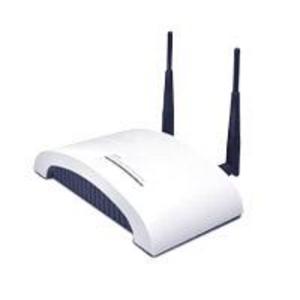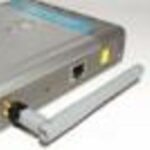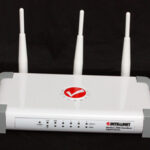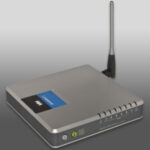Recently a client came to me because he was having issues with his current wireless extender. He had his wireless router upstairs in his office and the signal worked ok for the second level, but when he went down stairs to work in the kitchen on his laptop he had almost no signal, showing only 1 bar. This seemed odd due to his kitchen being almost directly below his office upstairs. Obviously, there was enough interference with electrical and AC ducts, etc that he had no signal. Therefore, he tried a range extender and had that unit plugged in downstairs between his kitchen and family room, and still he had only one bar. Therefore, he called me in to investigate and deliver a solution.
I thought it best that I do some research and bring with me a solution that I think would work the best and solve the issues. After much reading on the Internet and looking at extender specifications and reading the fine print…Yes I read the fine print and look for the hidden gotcha of the different products, I finally settled on what I thought would be the best extender for my client. I opted for the Hawking Hi-Gain HWREN1 Wireless-300N Range Extender. This unit is not the least expensive on the market, nor the most expensive, but at $100+, one expects the unit to function well, be easy to install, and work consistently.
Upon arriving on site at my client’s house, the first thing that I wanted to do was to see what was currently going on with his network and his wireless connectivity. Again, he was only getting a single bar downstairs, but I wanted a better way to benchmark what we were seeing to be able to show any positive progress going forward. In order to do this I installed WiFi Signal Strength Monitoring software onto my laptop. After much trial and error of testing different Signal Strength analyzing software from my office, I had finally settled on inSSIDider’s Wi-Fi network scanner. I found this software to be rather user friendly and easy to gage progress.
One of the features that I like with the network scanner software is the ability to gauge dB signal. dB is the abbreviation for the power ratio in decibels of the measured power referenced to one milliwatt (mW). Since it is referenced to the watt, it is an absolute unit. Therefore, this is a great way to benchmark progress and the current network as well as how the new device is working. In looking at my client’s current wireless network downstairs, we were showing between a -80 and -90 dBs. Being a negative number the lower one goes the worse the network. The typical wireless network has a range of -10 to -70 dBs. This showed us that the current network was very low, and gives us an absolute reading to compare to rather than just the “1 bar” that the network card was showing.
After benchmarking, we were off to do the install. Installing the Hawking Hi-Gain Wireless -N Range Extender installs rather fast, but it does require being plugged into the current router and a PC/laptop near by. Therefore, I plugged the Hawking Hi-Gain Wireless -N Range Extender into his current router, and then put the install CD into the drive bay. At this point, you will be asked for several pieces of information so be prepared to know your current router’s user name and password, know your current SSID name, as well as your WPA or WEP passphrase. The automated install will do the following steps.
1.) The install software will scan and find your range extender; you will have to verify that this is truly your extender.
2.) You will then give your Range Extender a name
3.) The setup wizard will assign the extender an IP address, or you can manually enter an address into the software.
4.) Then you will have to choose the network that you will be extending.
5.) The security setting will have to match those on your current router, so here is where you will need that info mentioned above.
6.) Finally, the setup wizard will tell you that your range extender is completely setup and ready for relocation to where ever you want to extend your network.
7.) Go ahead and unplug from the current router, and exit out of the setup software, as you are ready to extend your network.
I did find one gotcha during the installation that is not mentioned in the documentation that is you might need to change the SSID on your current router. The range extender could not find the current SSID from my client’s router as the name was in two parts. His SSID was “Jones House” (I am changing the name to protect the client). So I would recommend that your SSID be all lower case as well as all one name. Once we changed the name to “joneshouse” the Hawking Hi-Gain Wireless -N Range Extender was able to find the SSID and talk to the router.
We then went downstairs and removed his old extender and plugged in the new one. Right away, we saw a huge improvement as his laptop was showing 5 bars. However, I wanted to see the results of the inSSIDider’s Wi-Fi network scan. The network scan showed a signal between -40 and -50 consistently downstairs. I roamed all over the downstairs area with my laptop and we had a good strong signal. It was good that we used this software to produce a benchmark as well as final test of the signal strength as the outcome proved the value of this wireless extender. By using, the wireless scanning software on a laptop is was easy to walk around and see the dB, thus showing areas that are stronger than other areas. Overall we gained between 40 and 50 dB’s by using this extender.







